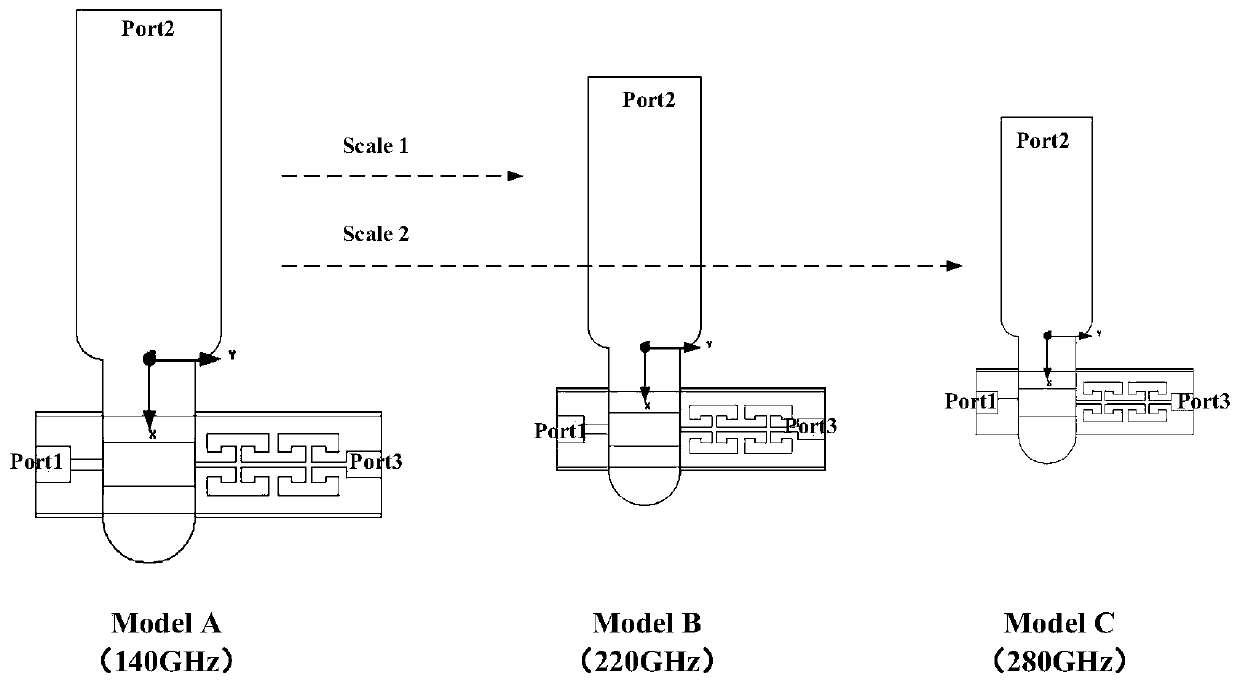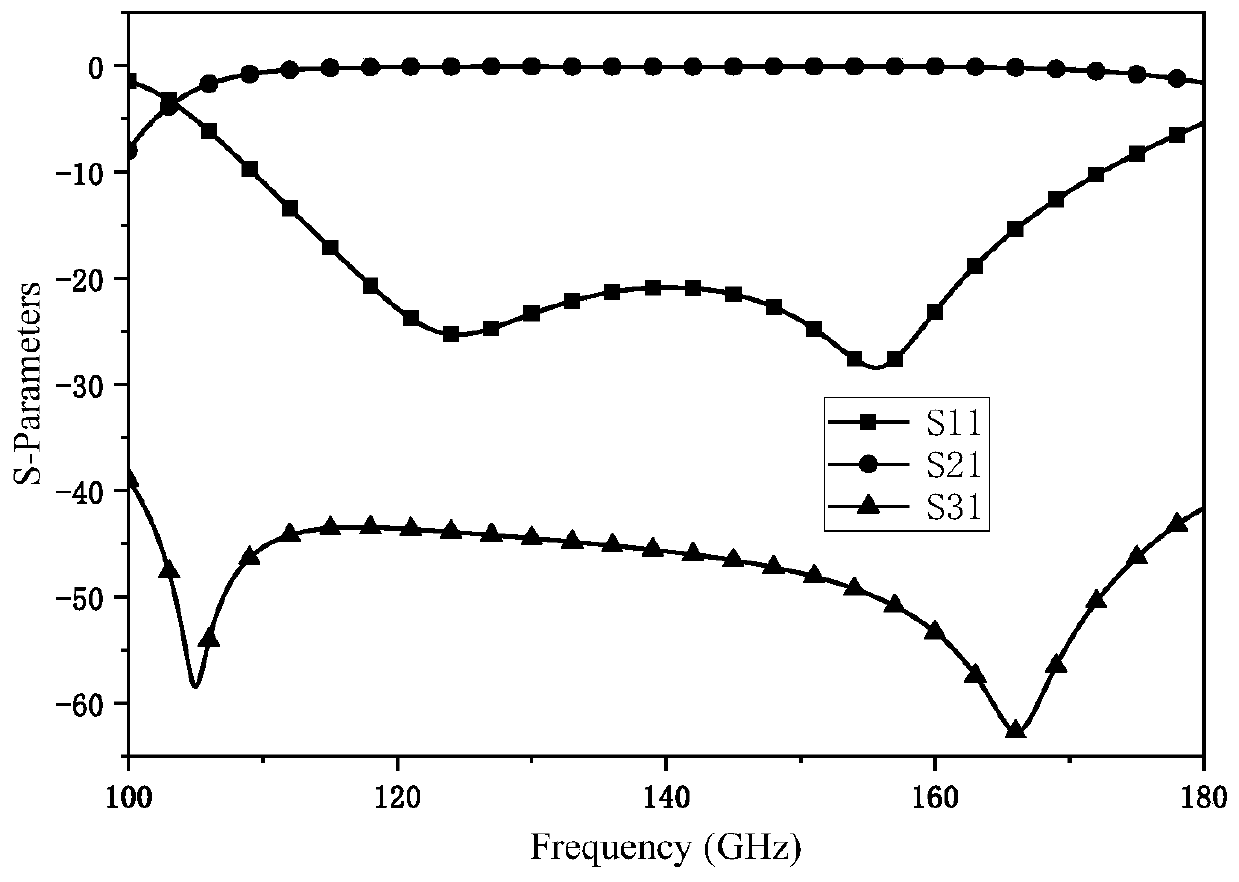Terahertz frequency band passive device design method
A technology of passive devices and design methods, applied in the direction of CAD circuit design, etc., can solve the problems of inefficiency, cumbersome, time-consuming, etc., and achieve the effect of simplifying the design process, high circuit processing accuracy, and easy scaling process
- Summary
- Abstract
- Description
- Claims
- Application Information
AI Technical Summary
Problems solved by technology
Method used
Image
Examples
Embodiment 1
[0039] Please refer to figure 1 and figure 2 , the present embodiment provides a method for designing passive devices in the terahertz frequency band, including the following steps:
[0040] S1. Determine the passive device A to be scaled, and its working frequency band is Band1.
[0041] In this embodiment, the passive device A is a device that has been designed according to the traditional method. The traditional method refers to scanning parameters one by one or multi-parameter optimization design, etc. The passive device A can be a filter, a power splitter, a transition conversion Wait.
[0042] In this embodiment, the passive device A selects Model A, and Model A is an E-plane probe transition structure with a center frequency of 140 GHz and a DC bias filter, and its substrate is a quartz substrate with a substrate thickness of 50 μm. The waveguide is WR6.5 (1.651mm×0.826mm), and the simulation results are as follows image 3 shown, from image 3 It can be seen that...
Embodiment 2
[0056] Please refer to figure 1 and figure 2 , compared with Example 1, Model A is still used as passive device A, but the difference is that the target frequency band Band2 is 230-330GHz, the scaling index is required to be within the frequency range of 230-330GHz, the return loss is better than 20dB, and the insertion loss Better than 0.25dB; in the frequency range of 205-360GHz, the isolation between DC and RF ports is better than 40dB.
[0057] In this embodiment, a passive device B working at 280 GHz is obtained. The passive device B is Model C, wherein the scaling factor is 0.5 (1×140 / 280), the thickness of the quartz substrate is 30 um, and the output interface is WR3. 4 (0.864mm×0.432mm). The simulation results of Model C are as follows Figure 5 It can be seen from the figure that the center frequency of Model C is 280GHz, and in the frequency range of 230-330GHz, the return loss is better than 20dB, and the insertion loss is better than 0.25dB; in the frequency r...
PUM
 Login to View More
Login to View More Abstract
Description
Claims
Application Information
 Login to View More
Login to View More - R&D
- Intellectual Property
- Life Sciences
- Materials
- Tech Scout
- Unparalleled Data Quality
- Higher Quality Content
- 60% Fewer Hallucinations
Browse by: Latest US Patents, China's latest patents, Technical Efficacy Thesaurus, Application Domain, Technology Topic, Popular Technical Reports.
© 2025 PatSnap. All rights reserved.Legal|Privacy policy|Modern Slavery Act Transparency Statement|Sitemap|About US| Contact US: help@patsnap.com



